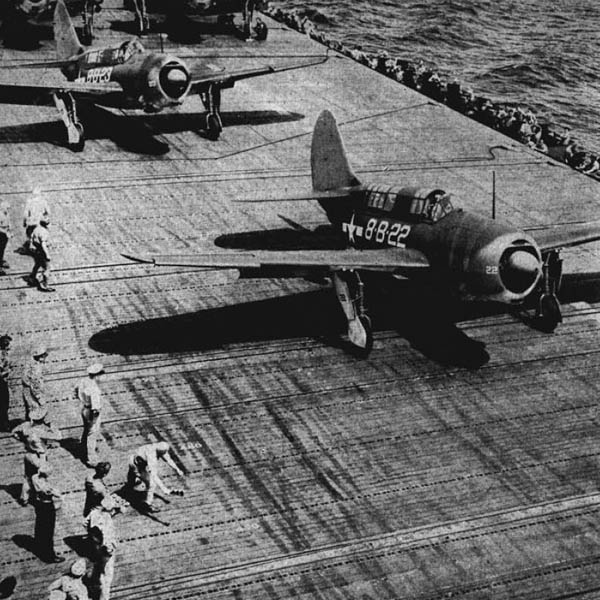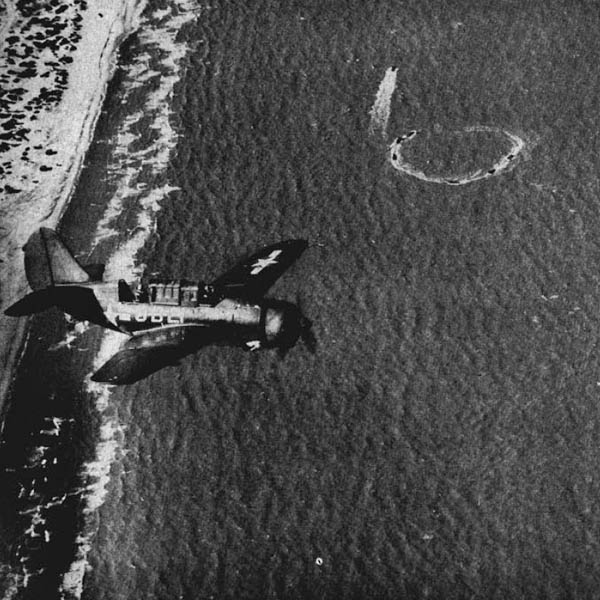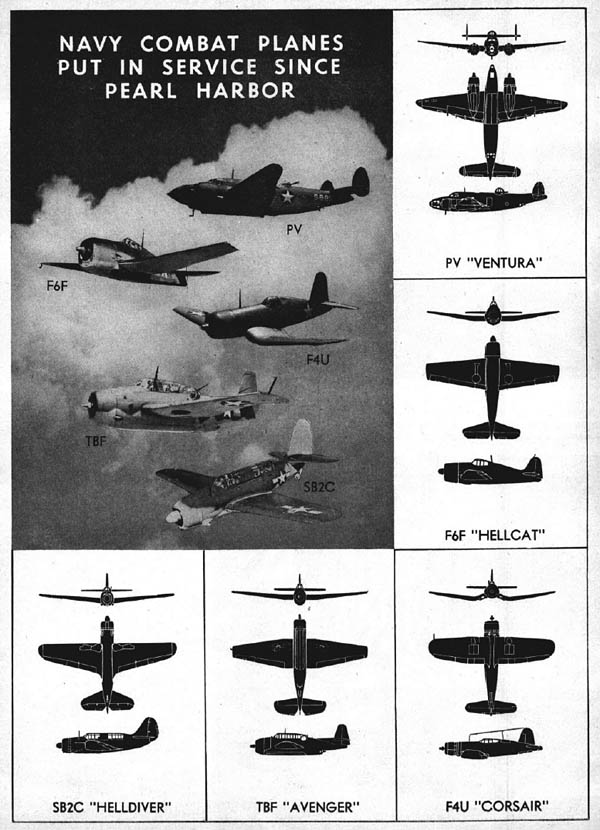Details of the combat debut of the U.S. Navy’s Curtiss SB2C Helldiver dive bomber at the Battle of Rabaul from Bureau of Naval Personnel Information Bulletin, February 1944.
HELLDIVER
The Navy’s New Dive Bomber Makes Debut In Smash at RabaulThe Navy’s newest air weapon, the Curtiss Helldiver (SB2C), is in action. With the Vought Corsair (F4U) and Grumman Hellcat (F6F) fighters and the Grumman Avenger (TBF) torpedo bomber, it completes, to date, the Navy’s war-born aerial attack team. All four planes incorporate the lessons of modern warfare taught by battle experience since Pearl Harbor.
A fifth Navy combat plane placed in service since America entered the war is the Ventura (PV) patrol bomber.
Helldivers on a carrier roll forward to take off. Official U.S. Navy photographs.
In its first combat action, the 11 November raid on Rabaul, the Helldiver–bigger and heavier than any dive bomber previously used by our armed forces–accounted for the bulk of the extensive toll taken of Jap shipping.
The Helldiver squadron, from one of a number of carriers in the attacking task force, made rendezvous after take-off and, climbing to altitude, moved in on the enemy. As the harbor was approached, the squadron commander ordered his men to step up speed and then push over into their dives on the mass of shipping below.
A Helldiver roars low over the shore as landing craft in maneuvers whirl through their buzzsaw circles before shooting toward the beach.
At this time swarms of enemy fighters swooped in on the bombers and attempted to break up their formation before they could dive. But the escorting Navy fighter squadron successfully beat off every attack.
The Jap warships tried frantically to escape to the open sea; but the big, bomb-laden planes, backed by fighters and torpedo planes, gave them little chance. A Japanese light cruiser bore the brunt of the Helldivers’ attack, suffering three direct hits which sent her to the bottom. Towering yellow flames from a heavy cruiser–probably sunk–led the attackers to believe their bombs had exploded the warship’s magazines. One of the dive bombers laid its bombs on the fantail of a destroyer, which sank, while two others hit a light cruiser, blowing up its superstructure. A second destroyer also was damaged.
As the Helldivers pulled out of their dives–the dive bomber’s most vulnerable moment–the enemy fighters again attacked. Many of the Helldivers escaped without being engaged. The others had to fight their way out and accomplished this without loss, destroying three Zeros and damaging one in the process.
After the attack, in which more than 28,000 pounds of bombs were dropped, the Helldivers sped back to their carrier, utilizing all available cloud and rain squall cover. Two of the planes were lost near the carrier, due to exhaustion of fuel, but their personnel were saved.












